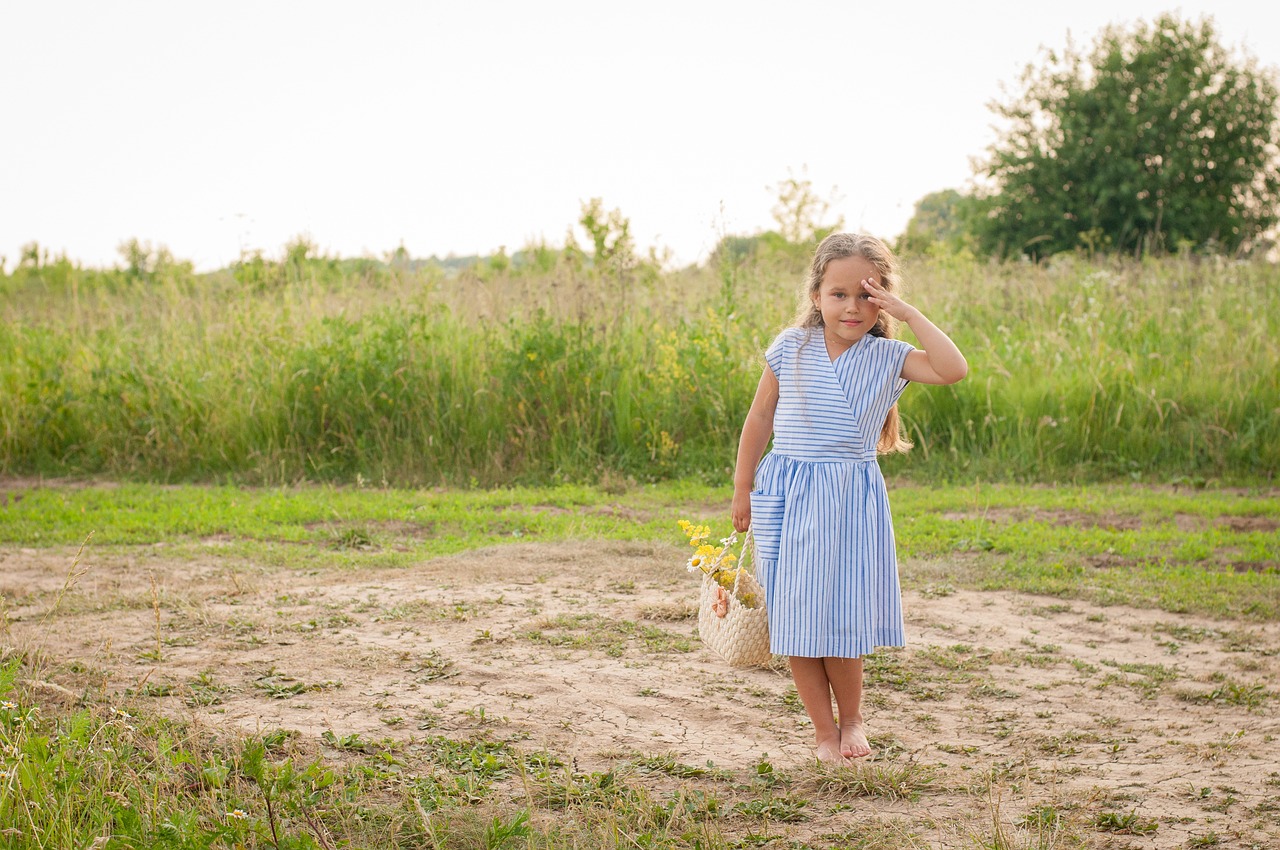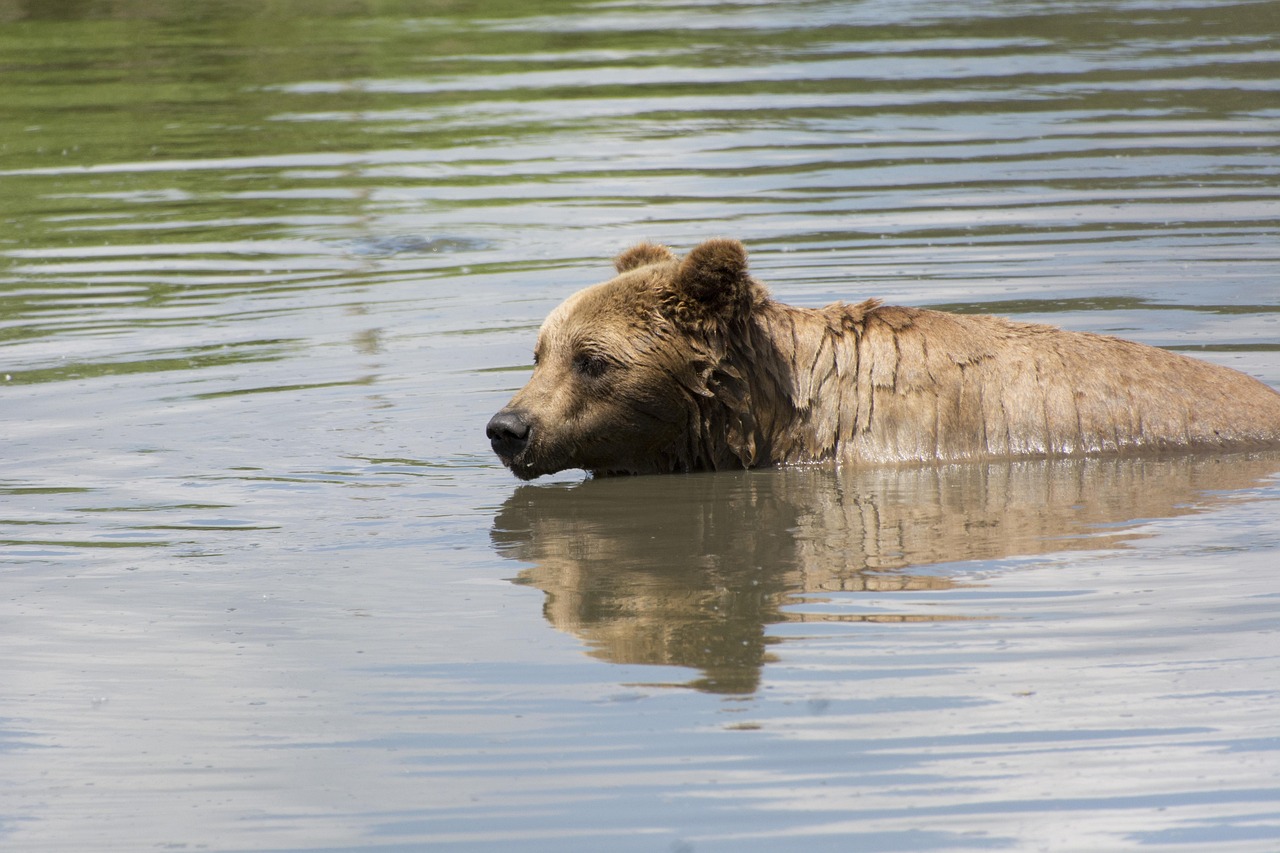Ryder is an integral character in the beloved children’s series Paw Patrol, captivating young audiences with his adventurous spirit and leadership qualities. As the 10-year-old leader of the Paw Patrol, he embodies the essence of bravery, intelligence, and responsibility, guiding a team of animated rescue dogs on various missions to help the citizens of Adventure Bay. This article delves into Ryder’s character, exploring his role, personality traits, and the valuable lessons he imparts to viewers.
Ryder is not just a leader; he is a role model for children. He showcases how one can lead with courage and compassion, making him a figure that resonates with young viewers. His age does not diminish his capability; rather, it highlights that anyone, regardless of age, can take initiative and make a difference in their community.
Ryder exhibits several key traits that contribute to his effectiveness as a leader:
- Empathy: He shows understanding and care for both his team and the citizens of Adventure Bay.
- Problem-solving Skills: Ryder approaches challenges with creativity and resourcefulness.
- Responsibility: He takes his duties seriously, ensuring the safety and well-being of his community.
Ryder’s empathy is evident in how he interacts with his team and the community. He teaches children the importance of kindness and understanding, illustrating that teamwork is essential in overcoming challenges. His compassionate nature encourages young viewers to practice these values in their daily lives.
Ryder fosters collaboration among the Paw Patrol members, emphasizing that teamwork leads to successful outcomes. He often reminds his team that together, they can achieve more than they could individually, promoting a sense of unity.
Ryder’s ability to listen to his team members highlights the importance of open communication. By valuing others’ opinions, he shows that effective leadership involves understanding and incorporating diverse perspectives.
Ryder’s quick thinking and resourcefulness enable him to tackle challenges effectively. This quality illustrates to children how to approach problems with creativity and confidence, encouraging them to think critically in their own lives.
As the leader of the Paw Patrol, Ryder plays a crucial role in maintaining safety and order in Adventure Bay. He serves as a model for civic responsibility, demonstrating how one can actively contribute to the community.
Ryder engages with the community by organizing events and rescue missions, teaching children the importance of helping others and being involved in local issues. His actions inspire young viewers to participate in their communities and make a positive impact.
Coordinating rescue missions, Ryder shows the significance of preparedness and teamwork in emergency situations. This not only educates children about safety but also inspires them to act responsibly in real-life scenarios.
Ryder’s character imparts valuable life lessons, reinforcing the importance of friendship, perseverance, and ethical leadership. His adventures serve as a platform for teaching young viewers essential values.
Ryder exemplifies friendship and loyalty, encouraging children to build strong relationships and support one another. His interactions with his team highlight the importance of being there for friends in times of need.
Through various adventures, Ryder teaches children the value of persistence and determination when facing obstacles. He promotes a growth mindset, showing that challenges can be overcome with hard work and dedication.
Ryder serves as a positive role model, inspiring children to be brave, compassionate, and proactive in their communities. His character encourages creativity and leadership skills, which can benefit young viewers in various aspects of their lives.
Ryder’s innovative solutions to problems encourage children to think creatively and develop their problem-solving skills. His adventures stimulate imagination, showing that thinking outside the box can lead to effective solutions.
By observing Ryder’s leadership style, young viewers can learn essential qualities that may benefit them in school and social settings. His example teaches that leadership is not just about authority but also about serving others and making thoughtful decisions.

Who is Ryder in Paw Patrol?
Ryder is a pivotal character in the beloved animated series Paw Patrol, captivating the hearts of children and parents alike. As the 10-year-old leader of a team of animated rescue dogs, he embodies the essence of bravery, intelligence, and leadership. His character serves as a beacon of hope and inspiration, teaching young viewers not just about adventure, but also about the values of teamwork, compassion, and responsibility.
Ryder is the charismatic and resourceful leader of the Paw Patrol, a group of animated pups dedicated to protecting the community of Adventure Bay. His leadership style is marked by a strong sense of duty and an unwavering commitment to his friends and neighbors. With his trusty ATV and a keen sense of adventure, he embarks on various rescue missions, showcasing his ability to think on his feet and make quick decisions.
Ryder’s effectiveness as a leader stems from a combination of key traits:
- Empathy: Ryder consistently shows understanding and compassion towards others, emphasizing the importance of kindness.
- Problem-Solving Skills: His quick thinking allows him to tackle challenges effectively, teaching children to approach problems creatively.
- Responsibility: He takes his role seriously, demonstrating civic responsibility and the importance of helping others.
Ryder’s empathetic nature is evident in how he interacts with both his team and the citizens of Adventure Bay. He teaches children the value of listening and understanding others’ feelings, which is essential for effective teamwork.
Ryder fosters a collaborative spirit among the Paw Patrol members. He encourages each pup to contribute their unique skills, demonstrating that teamwork leads to successful outcomes in their rescue missions.
Ryder’s ability to think critically and creatively in high-pressure situations is a key aspect of his character. He shows young viewers how to approach problems with confidence and innovation, inspiring them to tackle their own challenges.
As the leader of the Paw Patrol, Ryder plays a crucial role in maintaining safety and order in Adventure Bay. His character serves as a model for civic engagement and responsibility.
Ryder actively participates in community events and encourages the pups to do the same. He teaches children the importance of being involved in local issues and helping those in need.
Ryder coordinates various rescue missions, demonstrating the significance of preparedness and teamwork in emergency situations. His leadership during crises serves as a great lesson for children about acting responsibly.
Ryder imparts essential life lessons that resonate with young viewers:
- Friendship: He exemplifies loyalty and support, encouraging children to build strong relationships.
- Perseverance: Through various adventures, he teaches the value of persistence and determination in overcoming obstacles.
Ryder’s character is a positive role model, inspiring children to be brave and proactive in their communities. His innovative problem-solving encourages them to think creatively in everyday situations.
By observing Ryder’s leadership style, young viewers can learn essential qualities that may benefit them in school and social settings. His approach to leadership emphasizes the importance of communication, empathy, and collaboration.

What are Ryder’s Key Traits?
Ryder, the charismatic leader of the Paw Patrol, possesses a variety of essential traits that make him an exemplary figure for young viewers. His character serves not just as an entertaining presence but also as a source of valuable lessons for children. In this article, we will delve into the key traits that define Ryder’s leadership style, focusing on empathy, problem-solving skills, and a profound sense of responsibility towards his team and the community.
One of Ryder’s most significant traits is his empathy. He consistently shows understanding and compassion towards his team members and the residents of Adventure Bay. This quality is crucial, as it teaches children the importance of kindness and understanding in teamwork. For instance, when a team member feels overwhelmed or uncertain, Ryder is always there to offer support and encouragement. His ability to connect with others fosters a sense of belonging and trust, which is vital for effective collaboration.
Ryder’s problem-solving skills are another defining characteristic. He approaches challenges with a calm demeanor and an innovative mindset. When faced with emergencies, Ryder quickly assesses the situation and devises a plan that utilizes the unique strengths of each Paw Patrol member. This not only showcases his leadership but also instills a sense of creativity and confidence in children, encouraging them to think critically and find solutions in their own lives.
Ryder’s sense of responsibility is evident in his commitment to both his team and the community. He takes his role as a leader seriously, understanding that the safety and well-being of Adventure Bay depend on his guidance. This trait teaches children the value of being accountable and engaged citizens. Ryder’s proactive approach to community issues inspires young viewers to get involved and make a positive impact in their surroundings.
Another important aspect of Ryder’s leadership is his ability to foster teamwork. He encourages collaboration among the Paw Patrol members, demonstrating that working together can lead to successful outcomes. By organizing team meetings and valuing each member’s input, Ryder shows that every voice matters. This approach not only strengthens their bond but also highlights the importance of communication in achieving common goals.
Ryder’s ability to listen is a crucial component of his leadership style. He actively engages with his team, taking the time to understand their ideas and concerns. This practice not only empowers his team members but also creates an environment where everyone feels valued. By modeling effective communication, Ryder teaches children the significance of listening and expressing their thoughts, which are essential skills in any collaborative effort.
Ryder’s role extends beyond just leading the Paw Patrol; he is also deeply involved in the community. Through various initiatives, he demonstrates the importance of community engagement. Whether it’s organizing a clean-up day or helping a neighbor in need, Ryder exemplifies how one person can make a difference. This encourages children to think about their role in their own communities and inspires them to take action.
Ryder’s coordination of rescue missions highlights the significance of preparedness and teamwork in emergency situations. He teaches children that being ready for unexpected challenges is crucial and that they can rely on their friends for support. This not only builds resilience but also instills a sense of community responsibility, showing viewers that together, they can overcome obstacles.
In summary, Ryder’s key traits—empathy, problem-solving skills, and a strong sense of responsibility—make him an effective leader and a positive role model for young viewers. By embodying these qualities, Ryder not only leads the Paw Patrol but also imparts essential life lessons, encouraging children to be brave, compassionate, and proactive in their communities.
Empathy and Compassion
are fundamental qualities that define Ryder’s character in the beloved children’s series, Paw Patrol. As the 10-year-old leader of a team of animated rescue dogs, Ryder’s ability to connect with both his team members and the citizens of Adventure Bay is remarkable. His actions teach children the vital lessons of kindness, understanding, and teamwork.
Ryder’s empathetic nature allows him to recognize and respond to the feelings of those around him. For instance, when a team member is feeling down or unsure, Ryder is always there to offer encouragement and support. This not only helps to build the confidence of his team but also instills a sense of belonging. Children watching these interactions learn that empathy is essential in building strong relationships, whether in friendships or teamwork.
Moreover, Ryder’s compassion extends beyond his team. He frequently engages with the citizens of Adventure Bay, lending a helping hand whenever they face challenges. By doing so, he teaches young viewers the importance of being aware of others’ struggles and taking action to help. This is particularly significant in a world where kindness can sometimes be overlooked. Through Ryder’s example, children are encouraged to practice empathy in their daily lives, whether it’s helping a friend in need or volunteering in their community.
Ryder’s approach to leadership is rooted in understanding. He encourages his team to express their thoughts and feelings openly, fostering a culture of open communication. This practice not only strengthens their bond but also enhances their ability to work together effectively during rescue missions. By listening to each member’s ideas and concerns, Ryder demonstrates that every voice matters, and that collaboration is key to success.
In addition to fostering empathy within his team, Ryder’s actions often highlight the importance of community support. When Adventure Bay faces emergencies, Ryder is quick to rally his friends and neighbors to assist. This sense of community engagement teaches children that helping others is a shared responsibility, and that everyone can contribute to making their environment a better place.
Through various episodes, viewers witness Ryder tackling challenges that require not just physical strength but also emotional intelligence. His ability to remain calm and compassionate under pressure serves as a powerful example for young audiences. They learn that empathy and compassion are not signs of weakness, but rather, they are strengths that can lead to effective problem-solving and conflict resolution.
In conclusion, Ryder’s character in Paw Patrol is a beacon of empathy and compassion. His interactions with his team and the community exemplify the importance of kindness and understanding in fostering teamwork and collaboration. By showcasing these values, Ryder not only entertains children but also equips them with essential life skills that can guide them in their relationships and interactions.
Encouraging Teamwork
In the vibrant world of Paw Patrol, teamwork is not just a concept; it is the very foundation of every successful mission. At the heart of this teamwork is Ryder, the young and dynamic leader who inspires his team of rescue dogs to collaborate effectively. His approach to teamwork serves as a powerful lesson for children, emphasizing that when individuals unite their strengths, they can overcome any challenge.
Ryder fosters a sense of collaboration among the Paw Patrol members by encouraging each pup to contribute their unique skills and talents. For instance, Chase brings his police expertise, while Marshall offers his firefighting skills. By recognizing and valuing each member’s abilities, Ryder not only builds confidence but also instills a sense of belonging within the team. This inclusive environment teaches young viewers the importance of appreciating diversity and leveraging different strengths to achieve common goals.
Moreover, Ryder often organizes team-building exercises that are both fun and educational. These activities allow the pups to practice communication and problem-solving skills in a supportive atmosphere. For example, during a rescue mission, Ryder might ask the team to brainstorm ideas on how to reach a stranded kitten. By facilitating open dialogue, he demonstrates that every voice matters and that innovative solutions often arise from collaborative efforts.
The lessons of teamwork extend beyond the screen. Children watching Paw Patrol learn that working together can lead to successful outcomes in various situations, whether it’s in sports, school projects, or daily life. Ryder’s leadership style exemplifies the idea that no one is an island; instead, success is often a collective achievement.
Additionally, Ryder’s ability to listen to his team members fosters a culture of respect and trust. He encourages the pups to express their ideas and concerns, reinforcing that effective communication is key to any successful team. This practice not only helps in resolving conflicts but also enhances the team’s overall performance during missions. Young viewers are taught that listening is just as important as speaking, a valuable lesson that can be applied in their own interactions.
Ryder also emphasizes the importance of perseverance in teamwork. When challenges arise, he encourages his team to remain focused and work together to find solutions. This resilience is crucial, as it teaches children that setbacks are a natural part of any endeavor, but with teamwork and determination, they can overcome obstacles. For instance, if a mission does not go as planned, Ryder reassures his team that they can regroup and try again, highlighting that failure is not the end but rather an opportunity to learn and grow.
In summary, Ryder’s approach to fostering teamwork within the Paw Patrol is a testament to the power of collaboration. By encouraging each member to contribute, promoting open communication, and teaching the value of perseverance, Ryder equips young viewers with essential life skills. These lessons encourage children to embrace teamwork in their own lives, paving the way for successful interactions in various social and academic settings.
Listening Skills
are an essential component of effective leadership, and Ryder from Paw Patrol exemplifies this trait beautifully. His ability to listen to his team members’ ideas and concerns illustrates the importance of open communication in leadership and problem-solving. This quality not only fosters a supportive environment but also enhances team dynamics, enabling the group to function more efficiently.
Ryder’s approach to listening is multifaceted. Firstly, he actively encourages his team to voice their opinions during rescue missions. By doing so, he ensures that every member feels valued and respected. This practice of inclusivity is vital, as it allows for a diverse range of ideas to surface, which can lead to innovative solutions to challenges the team faces. For instance, when the Paw Patrol encounters a tricky situation, Ryder often gathers input from his canine friends, showcasing how collective brainstorming can lead to successful outcomes.
Moreover, Ryder’s listening skills extend beyond mere words. He is highly attuned to the emotions and non-verbal cues of his team. This emotional intelligence allows him to gauge when someone may be feeling overwhelmed or hesitant. By addressing these feelings, Ryder demonstrates that leadership is not just about making decisions, but also about understanding and supporting team members. This reinforces the notion that a good leader prioritizes the well-being of their team, creating a culture of trust and collaboration.
In addition, Ryder’s ability to listen effectively enhances problem-solving capabilities within the Paw Patrol. When faced with emergencies, he encourages his team to share their thoughts on the best course of action. This collaborative approach not only empowers the team but also leads to more comprehensive solutions. For example, if a mission requires a unique skill set, Ryder listens to each member’s strengths, allowing the team to strategize effectively and utilize their skills to the fullest.
Furthermore, Ryder’s listening skills serve as a model for young viewers, teaching them the significance of communication in their lives. Children learn that expressing their thoughts and concerns is crucial, whether in school, at home, or in their friendships. By observing Ryder, they understand that every voice matters, and that listening is a vital part of any relationship. This lesson not only promotes self-confidence but also encourages empathy and understanding among peers.
Ryder’s leadership style, characterized by his exceptional listening skills, ultimately cultivates a strong sense of teamwork. He demonstrates that when leaders prioritize open communication, they create an environment where collaboration thrives. This is particularly important in times of crisis, where quick and effective solutions are necessary. The Paw Patrol’s success in their missions is a testament to how listening and teamwork can lead to remarkable achievements.
In conclusion, Ryder from Paw Patrol showcases the profound impact of listening skills in leadership. His ability to foster open communication, understand his team’s emotions, and encourage collaboration not only enhances problem-solving but also instills valuable lessons in young viewers. By embodying these qualities, Ryder serves as a positive role model, inspiring the next generation to value communication and teamwork in their own lives.
Problem-Solving Abilities
In the vibrant world of Paw Patrol, Ryder stands out not just as a leader, but as a beacon of that captivate young audiences. His character showcases the importance of tackling challenges head-on with a mix of creativity and confidence, providing an excellent model for children to emulate.
Ryder’s approach to problem-solving is not merely about finding quick fixes; it involves a deep understanding of the situation at hand. He assesses challenges from multiple angles, demonstrating to children the value of critical thinking. For instance, when faced with a rescue mission, Ryder evaluates the resources available, the skills of his team, and the specific needs of those in distress. This thorough assessment teaches children that effective problem-solving requires patience and strategic planning.
Moreover, Ryder’s quick thinking often leads to innovative solutions. He encourages his team to think outside the box, fostering an environment where creativity flourishes. This is particularly evident during episodes where conventional methods fail. Ryder inspires his team to brainstorm and explore alternative solutions, reinforcing the idea that there is often more than one way to address a problem. This approach not only enhances their problem-solving skills but also boosts their confidence in their abilities.
One of the most significant lessons Ryder imparts is the importance of collaboration. He consistently involves his team in the decision-making process, highlighting that teamwork is essential in overcoming obstacles. By listening to his friends’ ideas and suggestions, Ryder shows children that every voice matters, and diverse perspectives can lead to more effective solutions. This collaborative spirit teaches young viewers that they don’t have to face challenges alone.
Ryder also emphasizes the importance of learning from failures. In various episodes, when plans don’t go as expected, he encourages his team to analyze what went wrong and how they can improve next time. This attitude instills a growth mindset in children, showing them that setbacks are opportunities for learning rather than reasons for discouragement. Ryder’s resilience and ability to bounce back from failures serve as a powerful reminder that persistence is key to achieving success.
Additionally, Ryder’s character embodies the principle of adaptability. In the fast-paced world of Adventure Bay, situations can change rapidly, requiring quick adjustments to plans. Ryder’s ability to pivot and modify strategies on the fly teaches children the importance of being flexible and open to change. This adaptability is a crucial skill that will benefit them not only in childhood but throughout their lives.
In summary, Ryder’s quick thinking and resourcefulness are central to his character, showcasing how effective problem-solving can be achieved through creativity, collaboration, and resilience. By following Ryder’s example, children learn to approach challenges with confidence and a positive attitude, equipping them with the essential skills they need to navigate the complexities of life.

Ryder’s Role in Adventure Bay
Ryder is not just a character in the animated series Paw Patrol; he is the linchpin that holds the team together and ensures the safety of Adventure Bay. As the 10-year-old leader, Ryder embodies the essence of civic responsibility, showcasing the importance of community engagement and proactive leadership.
In Adventure Bay, Ryder serves as the primary figure responsible for coordinating rescue missions and maintaining order. His leadership is vital in ensuring that the Paw Patrol is always ready to respond to emergencies, reinforcing the idea that being prepared is crucial for community safety. Ryder’s character teaches children that responsibility is not just a personal trait but a communal obligation.
Ryder actively engages with the citizens of Adventure Bay, demonstrating how important it is to be involved in local issues. His interactions often highlight the significance of helping others and the role of a responsible citizen. For instance, when a natural disaster strikes, Ryder is quick to organize community efforts, teaching young viewers that they too can make a difference in their neighborhoods.
One of Ryder’s most critical responsibilities is coordinating the Paw Patrol’s rescue missions. He exemplifies the importance of teamwork and preparedness during emergencies. Each mission is a learning opportunity for children, illustrating how quick thinking and collaboration can lead to successful outcomes. For example, when a kitten is stuck in a tree, Ryder not only leads the rescue but also explains the steps the team must take to ensure everyone’s safety, emphasizing the need for planning in crisis situations.
Ryder’s leadership extends beyond direct action; he also focuses on educating the community about safety. Through various episodes, he teaches children essential safety tips, such as the importance of wearing helmets while biking or how to stay safe near water. By instilling these values, Ryder helps cultivate a generation of safety-conscious individuals who understand the importance of looking out for one another.
Ryder’s character serves as a powerful role model for children. By showcasing his strong sense of duty and commitment to his team, he inspires young viewers to adopt similar values in their lives. The lessons learned from Ryder encourage children to be proactive, whether it’s helping a friend in need or taking initiative in school projects.
Ryder fosters a sense of community among the Paw Patrol members and the residents of Adventure Bay. He encourages collaboration and teamwork, teaching children that working together can lead to better results. This message resonates with young viewers, highlighting the importance of friendship and loyalty in achieving common goals.
Through his actions, Ryder exemplifies essential leadership qualities such as empathy, communication, and problem-solving. By observing how Ryder interacts with his team, children can learn valuable lessons about effective leadership. His ability to listen to his team members and address their concerns fosters an environment where everyone feels valued, reinforcing the idea that good leaders are also good listeners.
In summary, Ryder’s role in Adventure Bay is multifaceted and deeply impactful. He serves as a beacon of responsibility and civic duty, teaching young viewers the importance of community engagement, teamwork, and safety awareness. Through his leadership, children are inspired to become proactive members of their communities, ready to face challenges with courage and compassion.
Community Engagement
In the vibrant world of Paw Patrol, community engagement is a central theme that resonates with young viewers. Ryder, the proactive leader of the Paw Patrol, exemplifies the essence of being involved in local issues and helping those in need. His character teaches children valuable lessons about the importance of community service and the impact they can have on their surroundings.
Ryder is not just a leader of rescue missions; he is a dedicated member of the Adventure Bay community. He actively participates in local events, encouraging children to take part in activities that promote community welfare. By organizing clean-up days, charity events, and educational workshops, Ryder instills a sense of responsibility in the children, highlighting that even small actions can lead to significant changes.
One of Ryder’s most important roles is teaching children about empathy and the significance of helping others. Through his interactions with the Paw Patrol team and the citizens of Adventure Bay, he demonstrates how acts of kindness can make a difference. For instance, when a neighbor is in trouble or a pet is lost, Ryder shows how stepping in to assist can foster a spirit of community and friendship.
Ryder encourages the children of Adventure Bay to be aware of local issues that affect their community. He often discusses topics such as environmental conservation, safety, and the importance of being informed citizens. By engaging in conversations about these subjects, Ryder helps children understand that they can be part of the solution, inspiring them to voice their opinions and take action on matters that concern them.
Through his leadership, Ryder fosters a sense of belonging among the children. He emphasizes that everyone has a role to play in their community, which helps build self-esteem and confidence. This inclusive approach encourages children to collaborate, share ideas, and work together towards common goals, reinforcing the idea that teamwork is essential in addressing community challenges.
In times of crisis, Ryder’s calm demeanor and quick decision-making skills shine. He teaches children the importance of being prepared and how to respond effectively in emergencies. Whether it’s a natural disaster or a community mishap, Ryder’s leadership during these situations illustrates the value of community solidarity and collective action, reminding children that they can contribute to safety and recovery efforts.
Ryder’s character also promotes the idea of volunteerism. He leads by example, showing that volunteering is not only rewarding but also essential for community development. By participating in various volunteer activities, children learn that giving back is a fundamental part of being a responsible citizen. This lesson encourages them to seek opportunities to help others, whether it’s through school projects, neighborhood initiatives, or local charities.
By engaging with the community and teaching valuable lessons, Ryder inspires the next generation of leaders. He shows children that leadership is not just about authority but also about service, compassion, and making a positive impact. As they grow, these lessons will shape their values and encourage them to become active, caring members of society.
In conclusion, Ryder’s active engagement with the community in Paw Patrol serves as a powerful example for children. Through his actions and teachings, he instills the importance of helping others, being involved in local issues, and fostering a spirit of collaboration and service. These lessons not only entertain but also empower young viewers to make a difference in their communities.
Emergency Response
is a critical aspect of Ryder’s role in Paw Patrol, showcasing his dedication to ensuring the safety of Adventure Bay’s community. Through his leadership, Ryder not only coordinates rescue missions but also instills the values of preparedness and teamwork in young viewers. This section delves into how these elements are portrayed in the series and their significance in real-life situations.
Ryder’s approach to emergency response emphasizes the importance of being prepared for unexpected events. Each episode often begins with a scenario that requires immediate action, teaching children that emergencies can arise at any moment. This underscores the idea that being ready can make all the difference in critical situations. By witnessing Ryder and the Paw Patrol spring into action, children learn the value of having a plan and the essentials of emergency preparedness.
Moreover, Ryder exemplifies the power of teamwork. The Paw Patrol is a diverse group of rescue dogs, each with unique skills that contribute to the success of their missions. Ryder’s ability to delegate tasks effectively showcases how collaboration can lead to successful outcomes. Children observing this dynamic are inspired to appreciate the strengths of their peers and understand that working together can solve complex problems.
- Team Coordination: Ryder organizes the team by assigning roles based on each member’s strengths, such as Chase’s police skills or Marshall’s firefighting abilities.
- Communication: Clear communication is vital during rescue missions. Ryder encourages his team to share ideas and updates, reinforcing the concept that open dialogue enhances teamwork.
- Support and Trust: Ryder fosters a supportive environment where team members trust one another, which is essential in high-pressure situations.
In addition to teamwork, Ryder’s character demonstrates the significance of quick decision-making in emergency scenarios. He often faces time-sensitive challenges that require him to think on his feet. For instance, when a kitten is stuck in a tree, Ryder must quickly assess the situation and determine the best course of action. This teaches children that being decisive and resourceful can lead to effective solutions, even under pressure.
Furthermore, Ryder’s interactions with the community highlight the importance of community engagement during emergencies. He often collaborates with local citizens to prepare for potential disasters, reinforcing the idea that everyone has a role to play in ensuring safety. This aspect of Ryder’s leadership encourages children to be proactive in their communities, reminding them that they can contribute positively to their surroundings.
Through these narratives, Ryder’s role in emergency response serves as a powerful tool for teaching children essential life skills. They learn not only about the logistics of handling emergencies but also about the values of empathy, responsibility, and courage. By observing Ryder in action, children are inspired to act responsibly and to engage with their communities in meaningful ways.
In conclusion, Ryder’s leadership in emergency response scenarios in Paw Patrol provides valuable lessons on preparedness and teamwork. His character encourages children to be proactive, resourceful, and collaborative, equipping them with the skills necessary to navigate challenges in their own lives. The series effectively blends entertainment with education, making it a vital resource for teaching young viewers about the importance of being ready for emergencies and the power of working together.

Lessons Learned from Ryder
Ryder, the central character of the popular children’s series Paw Patrol, serves as a beacon of valuable life lessons for young audiences. Through his adventures and interactions with his team of animated rescue dogs, he reinforces essential values such as friendship, perseverance, and ethical leadership. These lessons are not just entertaining; they are crucial for the developmental growth of children.
One of the most significant lessons imparted by Ryder is the concept of friendship. He exemplifies the qualities of loyalty and support, encouraging children to build strong relationships with their peers. In various episodes, Ryder demonstrates how working together and being there for one another leads to successful outcomes. This collaborative spirit teaches kids the importance of nurturing friendships and being reliable friends themselves.
Throughout the series, Ryder encounters numerous challenges that require him to think critically and act decisively. His ability to persist in the face of adversity is a powerful message for young viewers. By portraying situations where Ryder must overcome obstacles, the show promotes a growth mindset, encouraging children to understand that failure is a stepping stone to success. This lesson fosters resilience and determination, traits that are invaluable as children navigate their own challenges.
Ryder’s character is a prime example of ethical leadership. He consistently makes decisions that prioritize the well-being of his team and the community. His actions reflect a strong moral compass, teaching children the importance of integrity and responsibility in leadership roles. By observing Ryder, young viewers learn that true leaders are not just authoritative figures but also empathetic individuals who consider the impact of their choices on others.
Teamwork is a recurring theme in Paw Patrol, and Ryder plays a pivotal role in fostering this environment. He encourages his team members to collaborate, highlighting that success is often a group effort. This lesson emphasizes the importance of communication and cooperation, skills that are essential in both academic and social settings. Children learn that by working together, they can achieve common goals and support one another in their endeavors.
Ryder’s ability to listen to his team members’ ideas and concerns is another vital lesson for young viewers. He demonstrates that effective leadership involves open communication and valuing others’ opinions. This aspect of his character teaches children the significance of active listening and how it can lead to better problem-solving and stronger relationships. By modeling these behaviors, Ryder instills in children the importance of respecting others’ voices.
Ryder’s role in Adventure Bay extends beyond just leading the Paw Patrol; he actively engages with the community. This involvement teaches children the importance of community service and being proactive in addressing local issues. By showcasing Ryder’s dedication to helping others, the series inspires young viewers to contribute positively to their communities, reinforcing the idea that everyone can make a difference.
In summary, Ryder’s character in Paw Patrol offers a wealth of life lessons that resonate with young viewers. From friendship and perseverance to ethical leadership and community engagement, his adventures provide valuable insights into personal development. As children watch Ryder navigate challenges and support his friends, they learn essential skills that will serve them well throughout their lives.
Friendship and Loyalty
In the colorful world of Paw Patrol, Ryder stands out as a beacon of friendship and loyalty. These qualities not only define his character but also serve as essential lessons for young viewers. By portraying these traits, Ryder encourages children to develop strong relationships with their peers and to support one another in times of need.
Ryder exemplifies what it means to be a true friend. He is always there for his team, the Paw Patrol pups, offering guidance and encouragement. This unwavering support teaches children the importance of being reliable and dependable. When a friend is in trouble, Ryder is quick to respond, demonstrating that friendship is about being present and active in each other’s lives.
Moreover, Ryder’s loyalty to his team is evident in every episode. He never hesitates to put the needs of his friends above his own. This selflessness is a powerful message for children, illustrating that loyalty is not just about sticking around; it’s about making sacrifices and standing by your friends during challenging times. By watching Ryder, children learn that true loyalty is about commitment, trust, and being there for one another no matter the circumstances.
Additionally, Ryder fosters an environment of collaboration and teamwork. He encourages the Paw Patrol members to voice their ideas and participate in decision-making processes. This approach not only enhances the bonds between the characters but also teaches children the value of teamwork. They learn that working together can lead to greater success than going solo. Ryder’s leadership style promotes the idea that everyone has something valuable to contribute, and that listening to others is a vital part of building strong relationships.
Ryder also models how to handle conflicts and disagreements in a constructive manner. When challenges arise, he guides his team through problem-solving discussions, emphasizing the importance of communication. Children see how Ryder navigates these situations with patience and understanding, reinforcing the idea that resolving conflicts amicably is crucial in maintaining friendships.
Furthermore, Ryder’s adventures often involve helping others in the community, which reinforces the concept of support beyond immediate friendships. He teaches children that being a good friend also means being a good citizen. By engaging with the community and assisting those in need, Ryder illustrates that friendship extends beyond personal relationships and encompasses a broader sense of responsibility towards others.
Through his actions, Ryder inspires children to be loyal friends, encouraging them to reach out to their peers, offer help, and build lasting connections. His character serves as a reminder that friendship is a two-way street that requires effort, understanding, and compassion. The lessons of friendship and loyalty that Ryder imparts resonate deeply with young viewers, shaping their understanding of how to cultivate meaningful relationships in their own lives.
In summary, Ryder is not just a character in a show; he is a role model for friendship and loyalty. His unwavering support for his team, commitment to teamwork, and dedication to helping others provide valuable lessons for children. By embodying these qualities, Ryder encourages young viewers to foster strong relationships, stand by their friends, and contribute positively to their communities.
Perseverance in Challenges
In the vibrant world of Paw Patrol, Ryder stands out not only as a leader but also as a beacon of perseverance and determination. Through his various adventures, he teaches children the invaluable lesson of facing challenges head-on. This concept of persistence is crucial, especially in a world where obstacles can seem daunting to young minds.
Ryder’s character consistently demonstrates that challenges are not merely roadblocks but opportunities for growth. Each mission the Paw Patrol embarks on is filled with unpredictable hurdles. Whether it’s rescuing a kitten stuck in a tree or navigating a flooded road, Ryder’s approach showcases the importance of maintaining a positive attitude. He encourages his team to view problems as puzzles to be solved rather than insurmountable barriers.
One of the most significant lessons Ryder imparts is the idea of a growth mindset. He often reminds his team that failure is not the end but a stepping stone to success. For example, in one episode, the Paw Patrol faces a particularly tricky situation where their usual methods fail. Instead of giving up, Ryder encourages his friends to brainstorm new strategies. This moment teaches children that innovation and adaptability are key components of overcoming challenges.
Moreover, Ryder’s unwavering support for his team fosters a sense of camaraderie. He emphasizes that perseverance is not a solo endeavor; it thrives in a team environment. By working together, the Paw Patrol demonstrates how collective effort can lead to success. This is a vital lesson for children, as it highlights the importance of collaboration in achieving common goals.
Ryder also embodies the value of resilience. When faced with setbacks, he remains calm and composed, showing that it’s okay to feel frustrated but essential to keep pushing forward. This resilience is a trait that children can learn to emulate in their own lives, whether in school, sports, or personal challenges. By watching Ryder navigate difficulties, young viewers are inspired to cultivate their own resilience.
In addition to these lessons, Ryder’s adventures often include moments of reflection. After each mission, he gathers the team to discuss what went well and what could be improved. This practice not only reinforces the idea of learning from experiences but also encourages children to be introspective about their own challenges. It teaches them that every obstacle is a chance to learn and grow.
Furthermore, Ryder’s character promotes the importance of setting goals. He often outlines clear objectives for each mission, which helps the Paw Patrol stay focused. This goal-oriented approach is crucial for children as they learn to navigate their own challenges. By setting small, achievable goals, they can build confidence and a sense of accomplishment, making larger challenges feel more manageable.
In conclusion, through his various adventures, Ryder effectively teaches children the importance of persistence and determination when facing obstacles. His character promotes a growth mindset, encouraging young viewers to embrace challenges as opportunities for learning and development. By embodying resilience, teamwork, and goal-setting, Ryder serves as a powerful role model, inspiring children to tackle their own challenges with confidence and creativity.

How Ryder Inspires Young Viewers
Ryder, the charismatic leader of the Paw Patrol, is not just a character in a children’s show; he embodies qualities that inspire young viewers to become active, compassionate members of their communities. His adventures are filled with lessons that resonate well beyond the screen, encouraging children to adopt positive behaviors and attitudes.
Throughout the series, Ryder consistently demonstrates bravery in various rescue missions, showing children that facing fears is a part of life. By taking on challenges head-on, he teaches young viewers the importance of being courageous, even when the situation seems daunting. This portrayal encourages children to step out of their comfort zones and tackle their own challenges with confidence.
Ryder’s character is characterized by his empathy and kindness. He often goes out of his way to help others, whether it’s rescuing a stranded animal or assisting a neighbor in need. These actions serve as a powerful reminder to children about the importance of being considerate and caring towards others. By modeling these behaviors, Ryder inspires kids to show compassion in their daily lives.
Ryder encourages children to be proactive in their communities. He frequently organizes community events and engages with local residents, teaching young viewers that active participation can lead to positive change. This involvement fosters a sense of responsibility and belonging, inspiring children to take initiative in helping their neighborhoods.
One of Ryder’s most admirable traits is his ability to think critically and solve problems creatively. Each episode presents new challenges that require innovative solutions. By observing Ryder, children learn to approach problems with a creative mindset, understanding that there are often multiple ways to overcome obstacles. This skill is invaluable as they navigate their own lives.
Ryder exemplifies the power of teamwork. He fosters collaboration among the Paw Patrol members, emphasizing that working together often leads to greater success. This lesson is crucial for children, as it teaches them the value of cooperation and the importance of listening to others’ ideas and perspectives. Teamwork not only enhances problem-solving but also builds strong friendships.
By observing Ryder’s leadership style, children can learn essential qualities that are vital for effective leadership. He demonstrates integrity, responsibility, and the ability to inspire others. These traits encourage young viewers to develop their own leadership skills, preparing them for future roles in school, sports, and other group activities.
Ryder’s innovative solutions to problems serve as a catalyst for encouraging creativity in young minds. He shows that thinking outside the box can lead to unexpected and effective outcomes. This emphasis on creativity encourages children to express themselves and develop their own unique ideas, which is essential for personal growth and development.
Ryder’s interactions with his team and the community highlight the importance of building positive relationships. He teaches children how to be loyal friends and supportive teammates, reinforcing the idea that strong bonds lead to better collaboration and success. This lesson is particularly important as children navigate social dynamics in school and other settings.
In summary, Ryder’s character serves as a multifaceted role model for children, instilling crucial values such as bravery, compassion, proactivity, and teamwork. Through his adventures, young viewers are inspired to become not only better individuals but also responsible members of their communities, equipped with the skills and mindset necessary to face life’s challenges.
Encouraging Creativity
In the vibrant world of Paw Patrol, Ryder stands out not just as a leader but as a beacon of creativity and innovation. His ability to devise unique solutions to challenges serves as a powerful example for young viewers, encouraging them to harness their own creative potential. This section delves into how Ryder’s approach to problem-solving fosters creativity in children.
Ryder’s character teaches children that creativity is not merely an artistic endeavor but a vital skill in tackling everyday problems. When faced with challenges, he often thinks outside the box, demonstrating that there are multiple ways to approach a situation. This encourages children to explore various solutions rather than settling for the first idea that comes to mind.
By observing Ryder, children learn to apply creative thinking in real life. For instance, when a mission requires a unique approach, Ryder might combine different tools or ideas from his team. This not only showcases the importance of teamwork but also highlights how diverse perspectives can lead to innovative solutions. Children are inspired to collaborate with peers, valuing each person’s input, which can lead to more effective problem-solving.
Another critical aspect of Ryder’s character is his willingness to experiment. He often encourages his team to try new methods, emphasizing that failure is a part of the learning process. This attitude teaches children that taking risks and making mistakes is essential for growth. By fostering a safe environment where experimentation is encouraged, Ryder helps children build confidence in their creative abilities.
Ryder’s adventures frequently require him to imagine scenarios and outcomes that may not be immediately apparent. For example, when a new problem arises in Adventure Bay, he often visualizes the end goal and works backward to find a solution. This method encourages children to use their imagination to envision possibilities and outcomes, which can be applied in various aspects of their lives, from school projects to personal challenges.
Ryder also teaches resilience through creativity. When faced with setbacks, he does not give up; instead, he reassesses the situation and seeks alternative solutions. This approach instills in children the idea that perseverance is crucial when pursuing creative endeavors. They learn that challenges can be opportunities for growth and that resilience is an essential component of the creative process.
Ultimately, Ryder’s innovative solutions serve as a catalyst for inspiring future innovators. By showcasing the importance of creativity in problem-solving, he encourages children to view challenges as opportunities for creative expression. This mindset not only prepares them for future academic and professional pursuits but also equips them with essential life skills that will benefit them in adulthood.
In summary, Ryder’s character in Paw Patrol exemplifies the significance of creativity in problem-solving. Through his innovative approaches, he inspires children to think creatively, collaborate with others, and embrace challenges with resilience. By embodying these qualities, Ryder not only entertains but also educates young viewers, preparing them to navigate the complexities of life with confidence and creativity.
Promoting Leadership Skills
In the world of children’s programming, Paw Patrol stands out as a beacon of positive values and essential life lessons. At the heart of this animated series is Ryder, a young boy whose leadership style offers valuable insights for children. By observing Ryder’s approach, young viewers can discover important leadership qualities that are beneficial not just in their daily lives but also in their interactions within school and social environments.
Ryder’s leadership is characterized by several key attributes that can inspire children. First and foremost, he exemplifies empathy. He consistently shows understanding and kindness towards his team and the citizens of Adventure Bay. This quality is crucial for effective leadership, as it fosters an environment where team members feel valued and understood. Children can learn that by being empathetic, they can build stronger relationships and create a supportive atmosphere in their own groups.
Another essential trait of Ryder’s leadership is his problem-solving ability. He approaches challenges with a calm and creative mindset, teaching children the importance of thinking critically when faced with obstacles. For instance, during rescue missions, Ryder often devises innovative solutions that not only solve the immediate problem but also encourage his team to think outside the box. This ability to tackle issues head-on can inspire young viewers to adopt a similar approach in their academic and social endeavors.
Ryder also emphasizes the significance of teamwork. He actively promotes collaboration among the Paw Patrol members, demonstrating that collective efforts often yield better results than individual attempts. This lesson is particularly relevant for children, as they navigate group projects in school and extracurricular activities. By learning to work together, children can develop a sense of camaraderie and achieve common goals.
Furthermore, Ryder’s leadership style showcases the importance of effective communication. He listens attentively to his team members, valuing their input and concerns. This practice not only strengthens team dynamics but also teaches children the value of open dialogue. By encouraging them to express their thoughts and feelings, Ryder instills the idea that communication is a two-way street, essential for successful teamwork.
Another aspect of Ryder’s leadership that stands out is his responsibility towards his community. He actively engages with the citizens of Adventure Bay, teaching children the importance of civic duty and community involvement. By participating in local events and helping those in need, Ryder serves as a role model for young viewers, encouraging them to take an active role in their own communities.
Through his various adventures, Ryder also teaches the value of perseverance. He faces numerous challenges, but his determination to overcome them is a powerful lesson for children. They learn that setbacks are a part of life and that persistence is key to achieving success. This mindset can be particularly beneficial in school, where students may encounter difficulties in their studies or social interactions.
In addition to these qualities, Ryder also inspires creativity in young viewers. His innovative thinking during rescue missions encourages children to approach problems with a creative mindset. By fostering a culture of creativity, Ryder empowers children to explore new ideas and solutions in their own lives, whether it be in their studies or personal projects.
In summary, by observing Ryder’s leadership style, children can gain valuable insights into effective leadership. His qualities of empathy, problem-solving, teamwork, communication, responsibility, perseverance, and creativity provide a comprehensive framework for young viewers to develop their own leadership skills. These lessons not only prepare them for future roles in leadership but also equip them with the tools to navigate their social and academic lives with confidence and integrity.
Frequently Asked Questions
- What is Ryder’s role in Paw Patrol?
Ryder is the fearless leader of the Paw Patrol, a group of rescue dogs dedicated to helping the community of Adventure Bay. At just 10 years old, he showcases bravery, intelligence, and a strong sense of responsibility, guiding his team through various rescue missions.
- What qualities make Ryder an effective leader?
Ryder embodies key leadership traits such as empathy, problem-solving skills, and the ability to encourage teamwork. He listens to his team members, values their input, and fosters a collaborative environment, teaching kids the importance of working together.
- How does Ryder teach children about community engagement?
Ryder actively engages with the citizens of Adventure Bay, demonstrating the significance of helping others and being involved in local issues. His actions inspire young viewers to take an interest in their communities and understand the impact of civic responsibility.
- What life lessons does Ryder impart to young viewers?
Through his adventures, Ryder teaches valuable lessons about friendship, loyalty, and perseverance. He encourages children to build strong relationships and to keep pushing through challenges, promoting a growth mindset that can benefit them in various aspects of life.
- How does Ryder inspire creativity in children?
Ryder’s innovative approach to problem-solving encourages children to think outside the box. By watching him tackle challenges with creativity and confidence, kids learn to develop their own problem-solving skills in everyday situations.



























